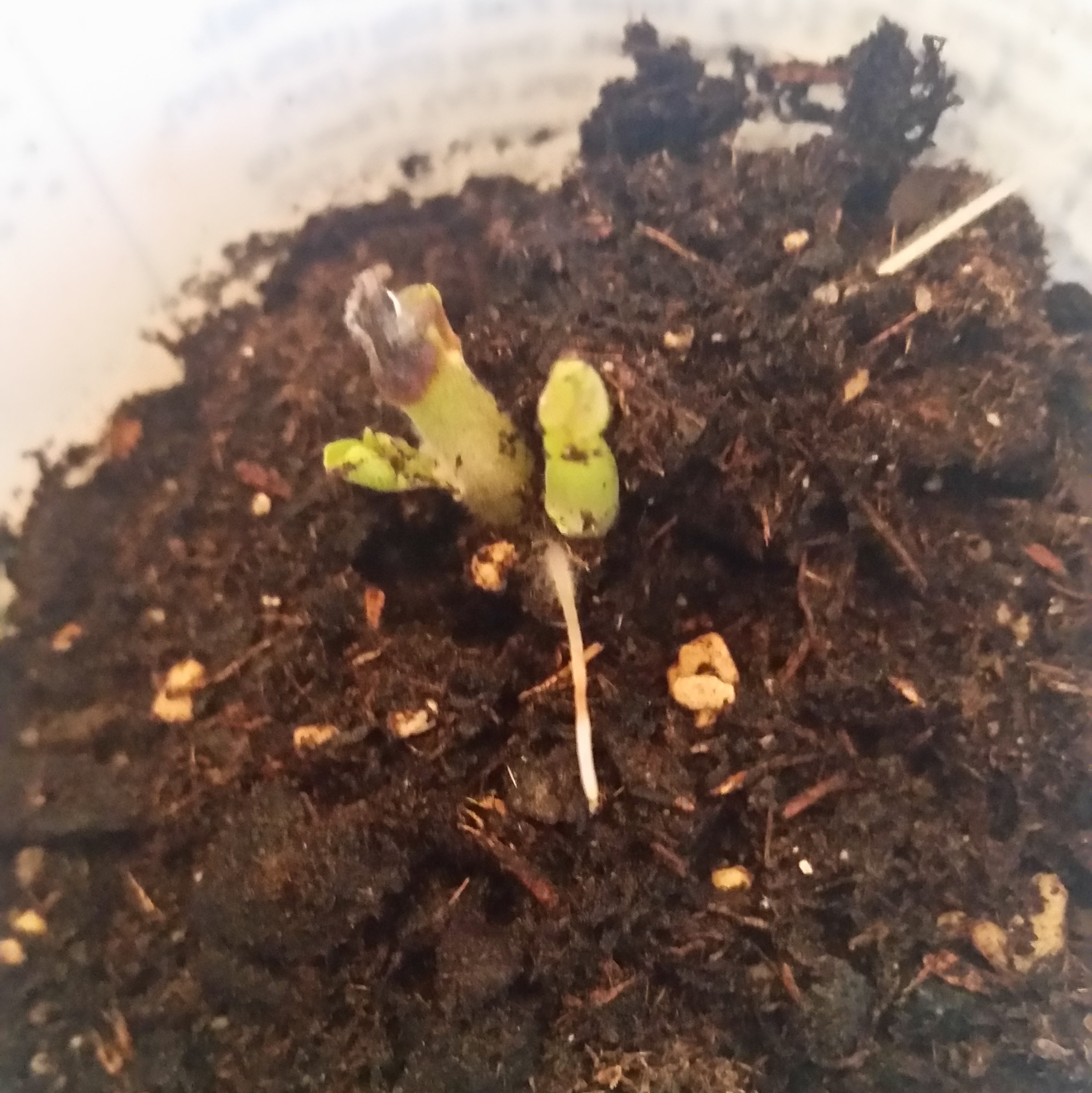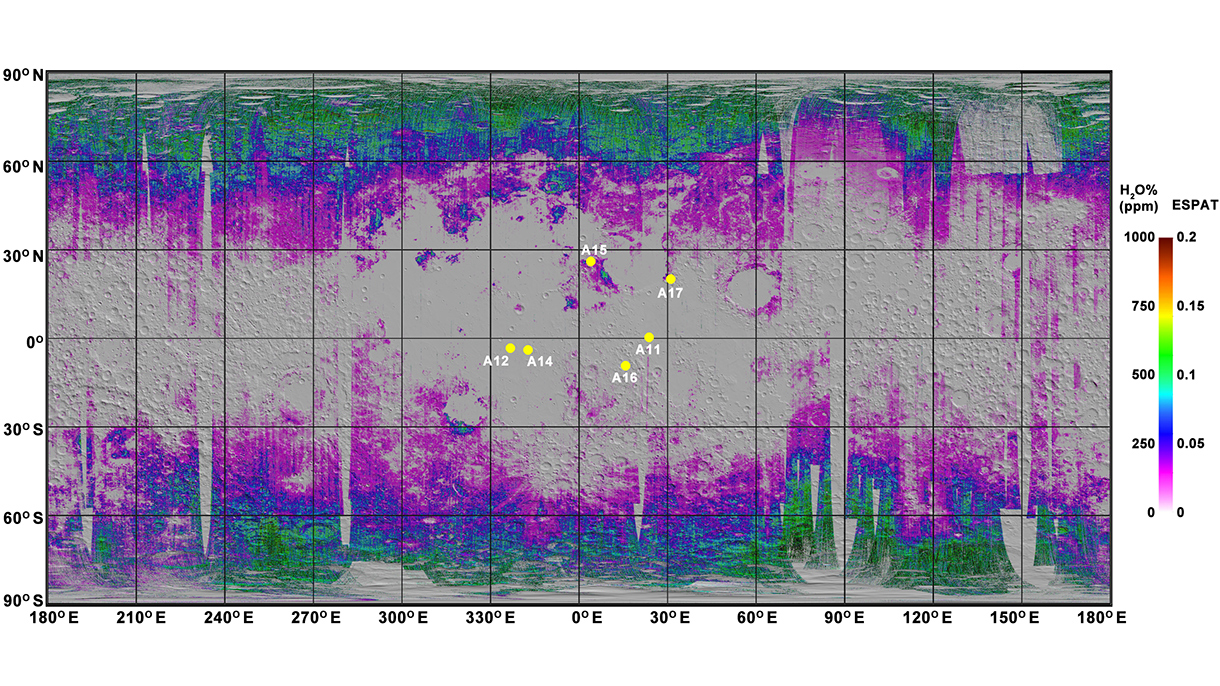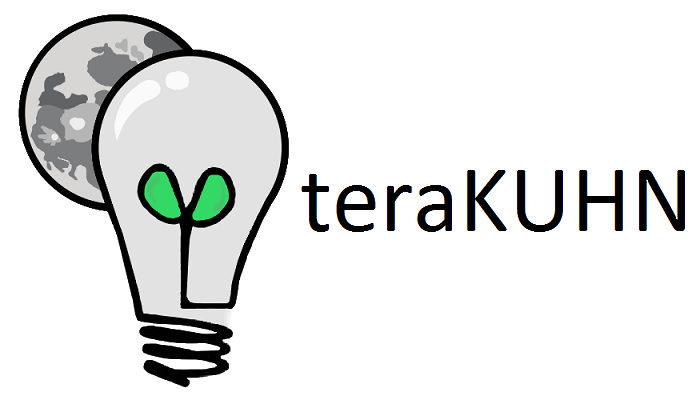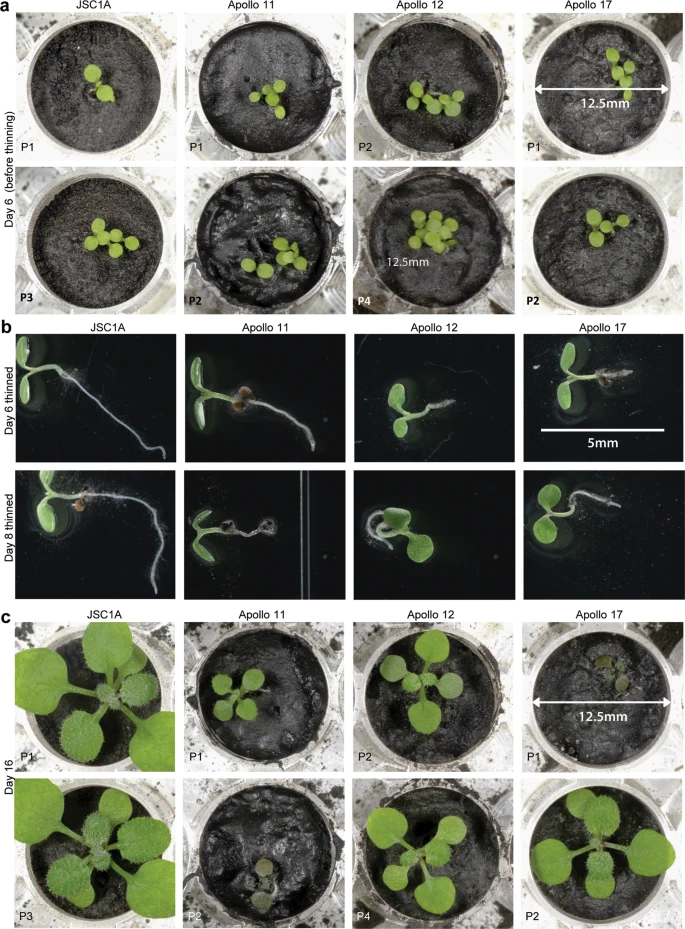
Potato sprout
Map of Lunar landings

Crocus Flower
The US Apollo program did not try to take plant life to the Moon's surface, only humans. USSR's Zond program did not try to take plant life to the Moon's surface, only around the Moon. China's Chang'e program did take plant seeds to the Moon's surface in 2019, but used Earth atmosphere, water, and nutrients inside a terrarium not using any local in situ Lunar resources. The Moon would be a very hostile environment to life so the Chang'e 4 spacecraft used an environmentally controlled sealed and insulated container for its biosphere experiment.
There are a number of things plant life needs. Plants need liquid water, an atmosphere with carbon dioxide, sunlight, nutrients, and a few other things to grow. The energy from sunlight is used to chemically change water (H2O) and carbon dioxide (CO2) into sugar. This process is called photosynthesis. The overall chemical equation for the photosynthesis that occurs in plants is:
- 6 CO2 + 6 H2O + light -> C6H12O6 + 6 O2
where:
- the product from photosynthesis is sugar (C6H12O6)
- a waste product from photosynthesis is oxygen (O2)
- carbon dioxide (CO2) is a reactant
- water (H2O) is a reactant
Atmosphere with Carbon Dioxide
Plants require the carbon dioxide from the atmosphere in order to perform photosynthesis. Plants take in carbon dioxide and release oxygen into the atmosphere. With no atmosphere on the Moon, plants would not have access to carbon dioxide. This could be resolved by having the plants in a pressurized domed or underground terrarium that is filled with carbon dioxide. Note that plants do not require the same atmospheric composition or sea level pressure that exists on Earth. Alpine plants grow in atmospheric pressure as low as 1/2 that of sea level pressure. Also, plants were grown on NASA's Skylab space station, and it used an atmosphere of 74% oxygen and only 26% nitrogen at 5 psi or about 1/3 Earth atmospheric pressure. Plants have been shown to be able to survive at pressures as low as 1.5 psi or about 1/10 Earth atmospheric pressure. The carbon dioxide needed for plants could be taken to the Moon. However, while only small amounts, carbon is present in the lunar regolith. It is hypothesised that this carbon could be extracted by heating the lunar regolith, causing carbon monoxide (CO), carbon dioxide (CO2), and methane (CH4) to form. See nutrients below. Also the atmosphere on Earth keeps the environment warm at night and cool during the day since it distributes heat which decreases thermal extremes. More about this under plants need for a temperature range below. Additionally the atmosphere on Earth provides a radiation shield and meteor sheild.
See also:
| Molecule | Earth 1 atm (101.325 kPa) | Earth rank | Lunar 3x10-15 atm (0.3 nPa) | Mars 6x10-3 atm (610 Pa) |
|---|---|---|---|---|
| Nitrogen (N2) | 780,840 | 1 | 0 | 26,000 |
| Oxygen (02) | 209,460 | 2 (plants produce) | 0 | 1,740 |
| Argon (Ar) | 9,340 | 3 | ~600,000 | 19,000 |
| Carbon dioxide (CO2) | 413.32 | 4 (plants use) | 0 | 949,000 |
| Neon (Ne) | 18.18 | 5 | ~200,000 | 0 |
| Helium (He) | 5.24 | 6 | ~200,000 | 0 |
| Methane (CH4) | 1.87 | 7 | 0 | 0 |
| Krypton (Kr) | 1.14 | 8 | 0 | 0 |
Water
Plants require water in order to perform photosynthesis. They also require water both to make nutrients and to move nutrients through their body from the soil. Plants would need water in a liquid state and not solid (ice) nor a gas (water vapor). No water was found on the Moon during the Apollo missions.
The water needed for plants could be taken to the Moon.
However, while the Apollo missions landed near the Lunar equator and found no water, small amounts of water are believed to exist closer to the Lunar poles.
Scientists from Brown University created a
global map of where evidence indicates water exists in lunar regolith
based on data from the Chandrayaan-1 spacecraft.

Lunar water distribution
The water concentrations are less than found in the Earth's driest deserts,
but generally the concentration is greater the closer you get to the lunar poles.
Note that instruments on the Chandrayaan-1, Lunar Reconnaissance Orbiter, and LCROSS spacecraft found evidence of hydroxyl (-OH),
which could be water (H2O) but could also be hydrates or compounds with chemically bound water molecules.
Thus, the form of water on the Moon might be solid water or ice,
but it could also be hydrates in the lunar regolith, or a mix of the two.
See nutrients below.
If water was found on the Moon, it would not be water vapor since water vapor would be lost to space or broken down by sunlight.
It also wouldn't be liquid water since with no atmospheric pressure water sublimes directly from solid to vapor.
The triple point of a substance is where it changes directly from a solid to a gas without becoming a liquid also known as its sublimation point.
Water has a triple point if it is below 0.006 Earth atmospheres of pressure.
Thus, without more than 0.006 of Earth atmospheric pressure, you can't get liquid water.

Phase diagram of water
Maintaining water in a liquid state on the Moon could be resolved by having the plants in a
pressurized domed or underground terrarium
that has an atmosphere.
The freezing point or melting point of water also changes with pressure.
However, the melting point only changes slightly from 0.01 degrees C at 0.006 Earth atmospheres to 0 degrees C at 1 Earth atmosphere.
On the other hand, the boiling point or condensing point of water can change significantly with pressure.
The boiling point changes from 0.01 degrees C at 0.006 Earth atmospheres to approximately 71 degrees C at 0.33 Earth atmospheres, which is the pressure Apollo spacecraft used, to 100 degress C at 1 Earth atmosphere.
Thus, unless water on the Moon stays below 0.01 degress C it would probably turn into a gas and float away.
This is why if water exists on the Moon it is either in locations that are always in shadows, like near the poles, or underground where the Sun won't heat it to boiling.
For more details on the state of water under different pressures and temperatures refer to
water phase diagram.

